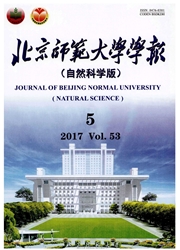

 中文摘要:
中文摘要:
基于长期定位监测的森林生物量数据以及气象数据,利用生物量加权计算法和空间关联法,研究气温梯度下中国森林生物量分布特征.结果表明:1)森林总生物量和地下生物量随着温度梯度变化趋势一致。表现为随着气温的增加而持续升高,当气温达到一定值,森林总生物量出现先上升后下降,继而又逐渐上升最后下降趋势.地上生物量随着温度梯度变化有微小差别,随着气温的增加而直接下降,继而又逐渐上升,最后呈下降趋势,在低温前期没有上升的趋势.2)植物地上生长与地下生长对温度有不同的响应机制,具有滞后效应.3)对森林生物量总贡献,地上生物量比地下生物量贡献大,茎生物量比枝叶生物量贡献大.以上结果表明了我国森林生物量随着气温的变化有明显规律可循,气温对生产力具有极其重要的影响作用.
 英文摘要:
英文摘要:
Long-term forest biomass and meteorological data were used to study temperature gradient and forest biomass distribution characteristics, with weighted biomass and geographical meteorological correlation methods Total biomass and underground biomass along the temperature gradient showed similar distribution characteristics Biomass increased with increasing temperature until a certain temperature value, after which the forest biomass continued to increase with increasing temperature before biomass declined; this was followed by another sequence of increase-then-decrease aboveground biomass showed little changes along the temperature gradient; direct decline was observed with increasing temperature. This was followed by a sequence of increase- then-decrease with further increasing temperatures The response mechanisms of aboveground and belowground plant growth to temperature gradient were found to be different, significant hysteresis was observed. For total forest biomass, aboveground biomass contributed more than underground biomass, stem biomass contributed more than shoot biomass. These works indicate that there are clear rules correlating temperature change with forest biomass variations in China. The effect of temperature changes on forest productivity is very significant.
 同期刊论文项目
同期刊论文项目
 同项目期刊论文
同项目期刊论文
 期刊信息
期刊信息
